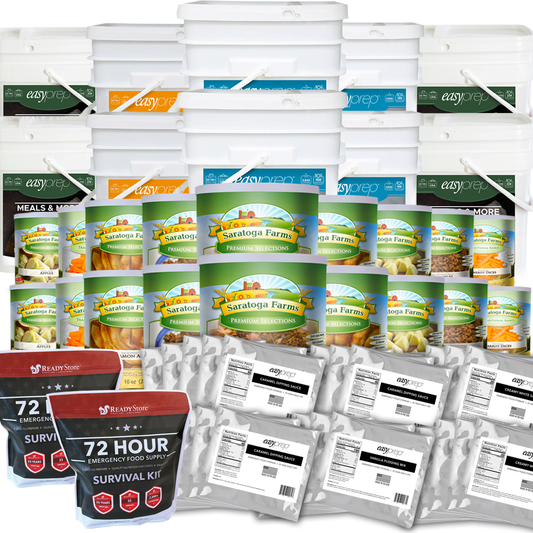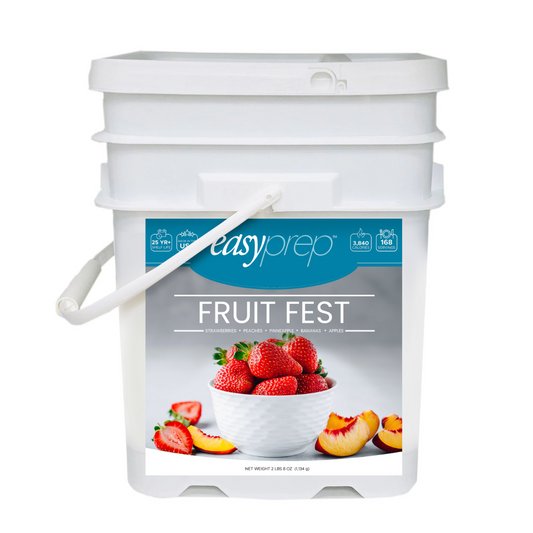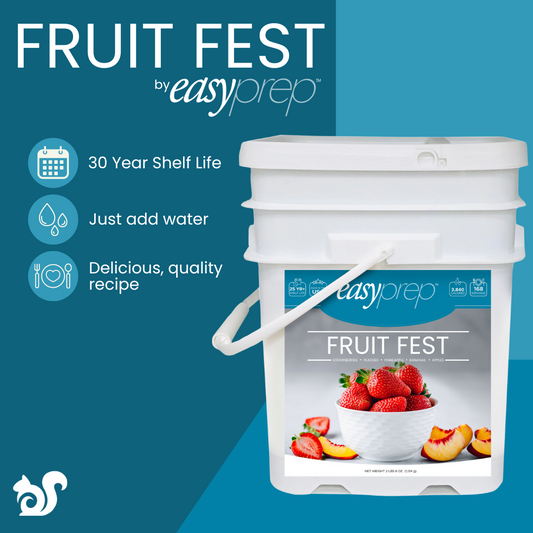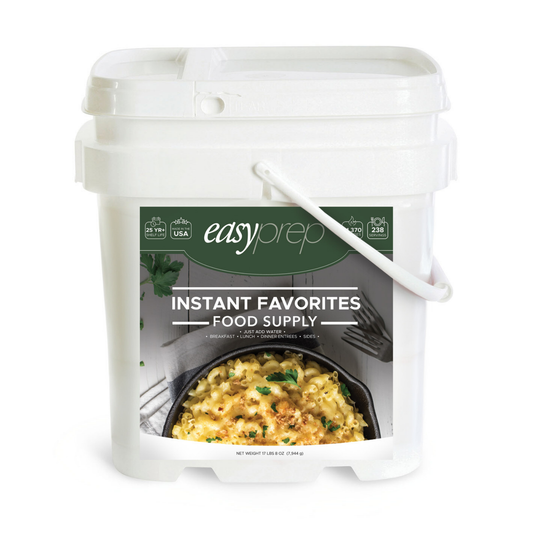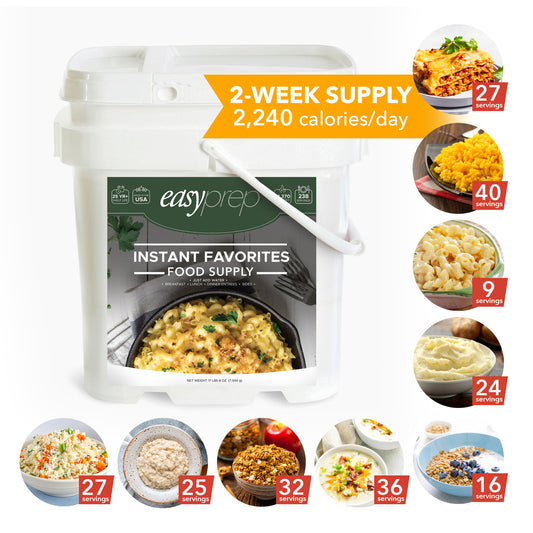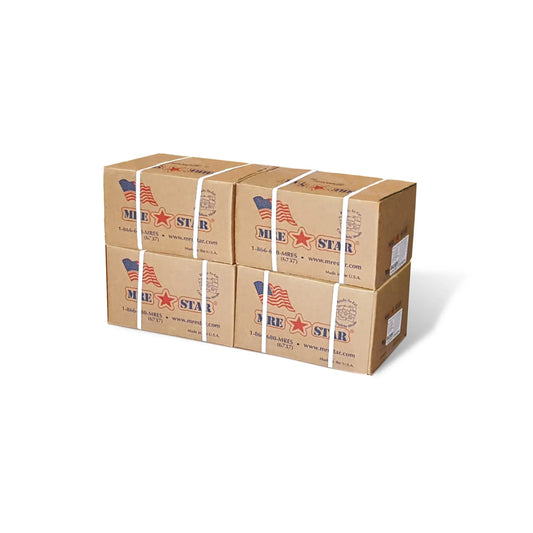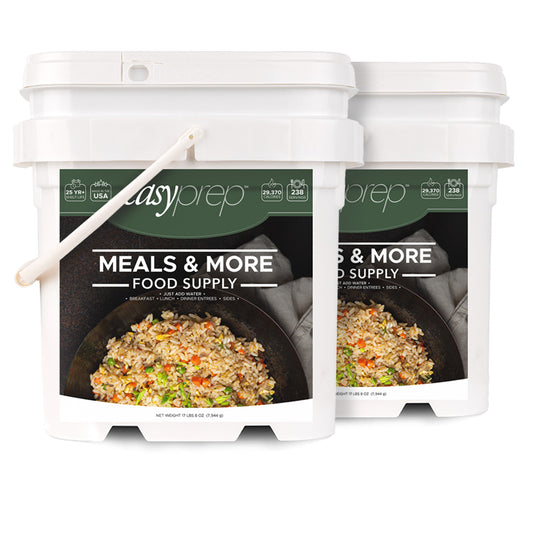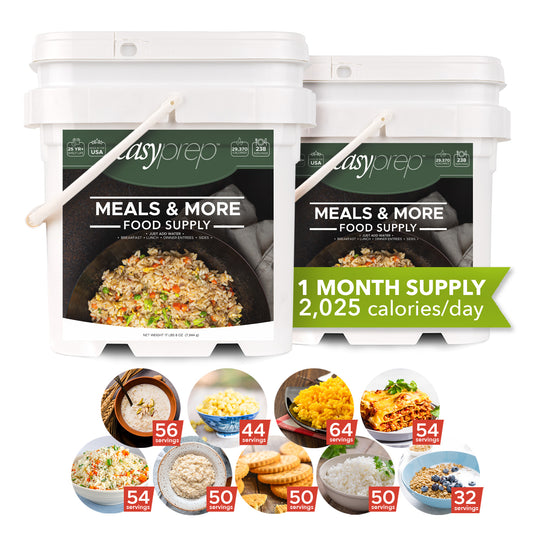Grow Your Own Portable Garden
08 May 2015
Growing your own food is useful for becoming more self reliant and saving money. It is also useful to grow your own food in case of an emergency. However, where you live might not always be conducive to growing food, especially if you live in urban areas where you don’t have much space outdoors. But not to worry, there are many solutions to choose from!
One of these solutions is bucket gardening. You can re-purpose 5 gallon food storage buckets into growing pots for certain plants. By planting in a bucket, your garden is portable and can be moved or transported if needed.
What You’ll Need

Carrots 10 plants per 5 gallon bucket Carrots grow best in well drained, lightweight soil in cooler conditions. The ideal temperature is between 55°and 75° F. It is possible to grow carrots through the winter if kept indoors. Stick with varieties whose roots won’t outgrow the length of the bucket.
Tomatoes 1 plant per 5 gallon bucket When growing tomatoes, it is important that they get enough sun. Buckets can grow larger varieties of tomatoes, including both bush and vine varieties. If the variety is a vine variety, you will need to place a stake or a cage in the bucket to support the plant as it grows.
Beets 4 plants per 5 gallon bucket Beets are a great food to grow because they are packed with vitamins and minerals. They also produce seedlings before sprouting that you can cut off and eat. Smaller varieties work best in buckets. Radishes 10 plants per 5 gallon bucket Radishes are one of the fastest growing vegetables, especially when they are grown in a container. You can have food to eat as short of time as one month. Radishes grow in cooler autumn temperatures and produce smaller, sweeter vegetables in the spring. Seeds can be sown into the top of the soil. Harvest as soon as they are an edible size.
Beans 3 plants per 5 gallon bucket There are two types of beans: bush beans and pole beans. Bush beans grow best in buckets and they produce food sooner than pole beans. They are a great source of protein and grow best in warmer weather with full sun.
Cucumbers 1 plant per 5 gallon bucket When planting cucumbers, the best results come from plant starts rather than seeds. You will need a male and female flower for pollination. Cucumbers grow in mild temperatures and will need a stake to climb up as it grows.
Peppers 2 plants per 5 gallon bucket Pepper plants need lots of light and lots of water. Plan on watering your pepper plant at least once a day. They like to grow in warmer temperatures, but need more water as the temperature increases. They can be harvested either at the green stage or later once they turn color.
Squash 1 plant per 5 gallon bucket There are many varieties of squash that will grow in buckets, including acorn squash, zucchini, and smaller varieties of pumpkins. In order to grow squash in a bucket, it will need to grow vertically. Place a stake in the bucket to help support the weight of the fruit. Place the bucket where the plant will receive plenty of light.
Potatoes Many plants per 5 gallon bucket Growing potatoes is different from the plants previously mentioned. You will need to start with a seed potato. Cut the potato into chunks, making sure that the chunks have multiple eyes. Fill your bucket with a few inches of soil, place the chucks 5 inches apart, and cover with a few more inches of soil. As the plants grow, continue to cover with soil until you reach the top. Your entire bucket will be filled with potatoes! Water until the stems turn yellow, wait a week, and dig up your potatoes.
What are your ideas? Comment below and tell us what you’ve grown in your portable garden. What do you think would be best to grow for an emergency?
• 5 Gallon Buckets--you can use buckets that you use to store food, like easyprep buckets. Drill holes in the bottom of your buckets so water can drain.
• Gravel--fill the bottom of your buckets with a few inches of rocks or gravel to help with water drainage.
• Planting Soil/Peat Moss/Compost--after adding in gravel, fill the rest of the bucket with a mix of these three things.
• Seeds or Plants--now you’re ready to plant your seeds or place your plants. The list of foods below will tell you how many seeds to grow in each bucket depending on the food.
What to Grow
Lettuce 4 plants per 5 gallon bucket Lettuce grows best in cool environments with plenty of water, but not too much that the roots are left soggy. Drainage is important when growing lettuce in a bucket. Harvest time for lettuce is when the leaves are young and tender.
Carrots 10 plants per 5 gallon bucket Carrots grow best in well drained, lightweight soil in cooler conditions. The ideal temperature is between 55°and 75° F. It is possible to grow carrots through the winter if kept indoors. Stick with varieties whose roots won’t outgrow the length of the bucket.

Tomatoes 1 plant per 5 gallon bucket When growing tomatoes, it is important that they get enough sun. Buckets can grow larger varieties of tomatoes, including both bush and vine varieties. If the variety is a vine variety, you will need to place a stake or a cage in the bucket to support the plant as it grows.

Beets 4 plants per 5 gallon bucket Beets are a great food to grow because they are packed with vitamins and minerals. They also produce seedlings before sprouting that you can cut off and eat. Smaller varieties work best in buckets. Radishes 10 plants per 5 gallon bucket Radishes are one of the fastest growing vegetables, especially when they are grown in a container. You can have food to eat as short of time as one month. Radishes grow in cooler autumn temperatures and produce smaller, sweeter vegetables in the spring. Seeds can be sown into the top of the soil. Harvest as soon as they are an edible size.

Beans 3 plants per 5 gallon bucket There are two types of beans: bush beans and pole beans. Bush beans grow best in buckets and they produce food sooner than pole beans. They are a great source of protein and grow best in warmer weather with full sun.

Cucumbers 1 plant per 5 gallon bucket When planting cucumbers, the best results come from plant starts rather than seeds. You will need a male and female flower for pollination. Cucumbers grow in mild temperatures and will need a stake to climb up as it grows.

Peppers 2 plants per 5 gallon bucket Pepper plants need lots of light and lots of water. Plan on watering your pepper plant at least once a day. They like to grow in warmer temperatures, but need more water as the temperature increases. They can be harvested either at the green stage or later once they turn color.

Squash 1 plant per 5 gallon bucket There are many varieties of squash that will grow in buckets, including acorn squash, zucchini, and smaller varieties of pumpkins. In order to grow squash in a bucket, it will need to grow vertically. Place a stake in the bucket to help support the weight of the fruit. Place the bucket where the plant will receive plenty of light.

Potatoes Many plants per 5 gallon bucket Growing potatoes is different from the plants previously mentioned. You will need to start with a seed potato. Cut the potato into chunks, making sure that the chunks have multiple eyes. Fill your bucket with a few inches of soil, place the chucks 5 inches apart, and cover with a few more inches of soil. As the plants grow, continue to cover with soil until you reach the top. Your entire bucket will be filled with potatoes! Water until the stems turn yellow, wait a week, and dig up your potatoes.

What are your ideas? Comment below and tell us what you’ve grown in your portable garden. What do you think would be best to grow for an emergency?


